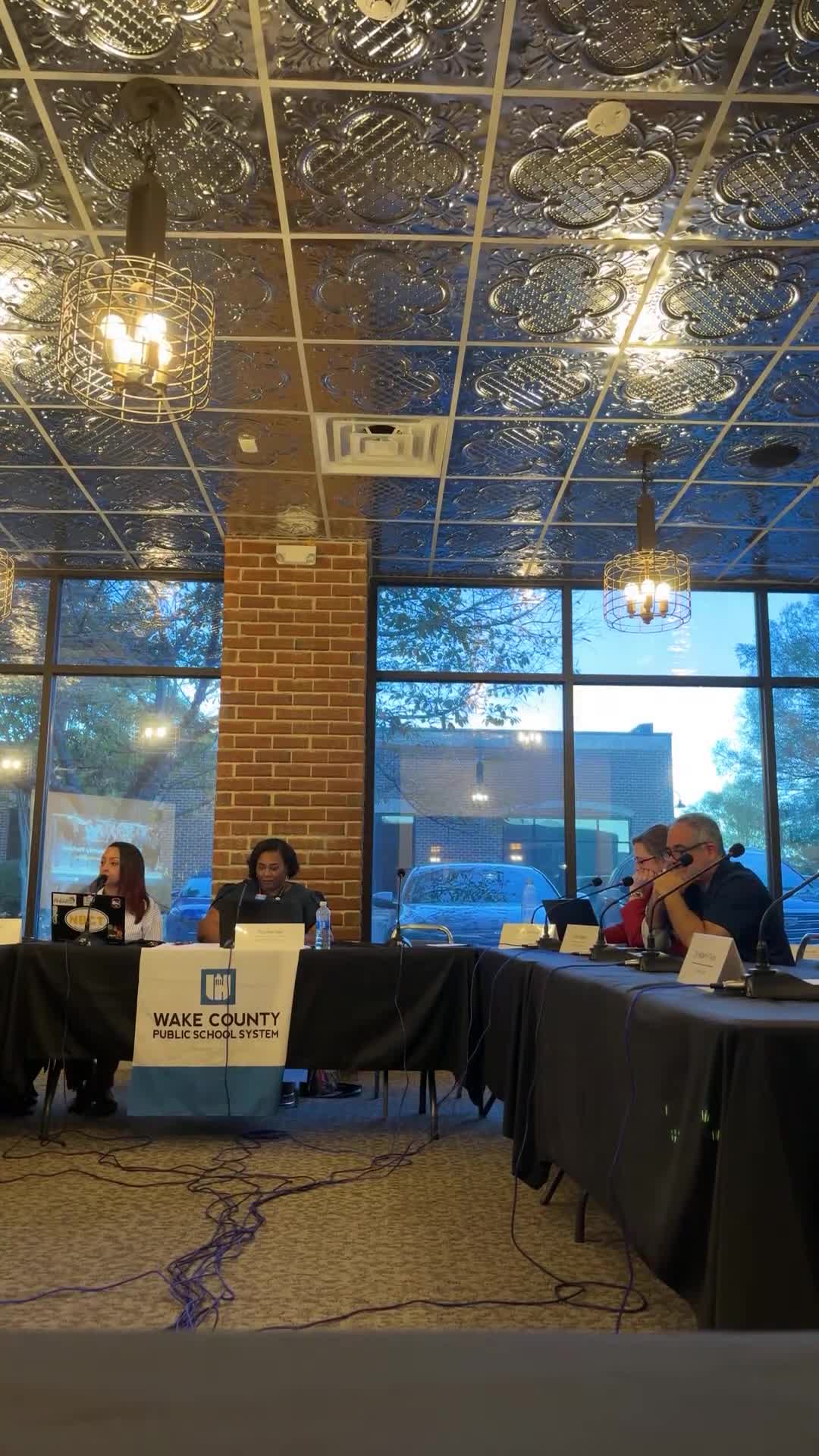Neighbor to Neighbor outlines paid peer‑mentor afterschool model, AI use and transportation needs
October 15, 2025 | Wake County Schools, School Districts, North Carolina
This article was created by AI summarizing key points discussed. AI makes mistakes, so for full details and context, please refer to the video of the full meeting. Please report any errors so we can fix them. Report an error »

Neighbor to Neighbor managing director Will Kiley told the Wake County Public School System Community Engagement Committee that his nonprofit runs an academically rigorous, transportation‑dependent afterschool program that pairs younger students with paid high‑school mentors.
“Most of our students are classified by the county as economically disadvantaged and/or English language learners,” Kiley said. “We provide transportation to Neighbor to Neighbor and back home to every single student free of charge.”
Kiley said the organization serves about 165–185 students across two sites (a downtown Raleigh location near Shaw University and a North Raleigh site near Millbrook Elementary School), that students on average gain roughly 1.25 grade levels per year in reading or math, and that 99 percent of program participants graduate high school. He said the program has grown about 32 percent in the last year and plans to triple its space next year.
Kiley described a paid, peer‑mentor model in which high‑school students (many themselves economically disadvantaged) earn a stipend to mentor elementary students, work in small businesses run by the nonprofit and serve as role models. He said peer mentors meet with younger students multiple days per week and also receive feedback after each one‑hour session to adjust curriculum.
Kiley also discussed the group’s early experiments with artificial‑intelligence tools to accelerate individualized curriculum planning. “I don’t think it can replace teachers,” he said. “But I do think it can turn a high‑school student into a pretty incredible supplement.” He said staff currently use district diagnostics such as i‑Ready, pair that data with mentor observations, and are exploring AI as a tool to speed curriculum customization while retaining human oversight.
Kiley asked the district to consider formal partnerships on curriculum training for teen mentors, expanded pickup/drop‑off locations (he suggested exploring whether program sites could be added as bus stops), and other transportation solutions, calling transit the program’s principal scaling barrier. “Transportation from school to an after‑school program is probably more essential than almost anything else we do,” he said.
Committee members and district staff asked about training and vetting for AI‑suggested lessons; Kiley said the nonprofit uses curriculum coordinators and is in exploratory stages with AI outputs, not yet running diagnostics through ChatGPT or similar tools for individual students without educator review.
Kiley closed by inviting district staff and school leaders to visit the program’s new Bragg Street facility and to help with curriculum development and mentor training if the district chooses to partner.
The presentation provided the committee with specific program metrics, requests for district coordination on transportation and data sharing, and an invitation to pilot mentor‑training collaborations.
“Most of our students are classified by the county as economically disadvantaged and/or English language learners,” Kiley said. “We provide transportation to Neighbor to Neighbor and back home to every single student free of charge.”
Kiley said the organization serves about 165–185 students across two sites (a downtown Raleigh location near Shaw University and a North Raleigh site near Millbrook Elementary School), that students on average gain roughly 1.25 grade levels per year in reading or math, and that 99 percent of program participants graduate high school. He said the program has grown about 32 percent in the last year and plans to triple its space next year.
Kiley described a paid, peer‑mentor model in which high‑school students (many themselves economically disadvantaged) earn a stipend to mentor elementary students, work in small businesses run by the nonprofit and serve as role models. He said peer mentors meet with younger students multiple days per week and also receive feedback after each one‑hour session to adjust curriculum.
Kiley also discussed the group’s early experiments with artificial‑intelligence tools to accelerate individualized curriculum planning. “I don’t think it can replace teachers,” he said. “But I do think it can turn a high‑school student into a pretty incredible supplement.” He said staff currently use district diagnostics such as i‑Ready, pair that data with mentor observations, and are exploring AI as a tool to speed curriculum customization while retaining human oversight.
Kiley asked the district to consider formal partnerships on curriculum training for teen mentors, expanded pickup/drop‑off locations (he suggested exploring whether program sites could be added as bus stops), and other transportation solutions, calling transit the program’s principal scaling barrier. “Transportation from school to an after‑school program is probably more essential than almost anything else we do,” he said.
Committee members and district staff asked about training and vetting for AI‑suggested lessons; Kiley said the nonprofit uses curriculum coordinators and is in exploratory stages with AI outputs, not yet running diagnostics through ChatGPT or similar tools for individual students without educator review.
Kiley closed by inviting district staff and school leaders to visit the program’s new Bragg Street facility and to help with curriculum development and mentor training if the district chooses to partner.
The presentation provided the committee with specific program metrics, requests for district coordination on transportation and data sharing, and an invitation to pilot mentor‑training collaborations.
View full meeting
This article is based on a recent meeting—watch the full video and explore the complete transcript for deeper insights into the discussion.
View full meeting
